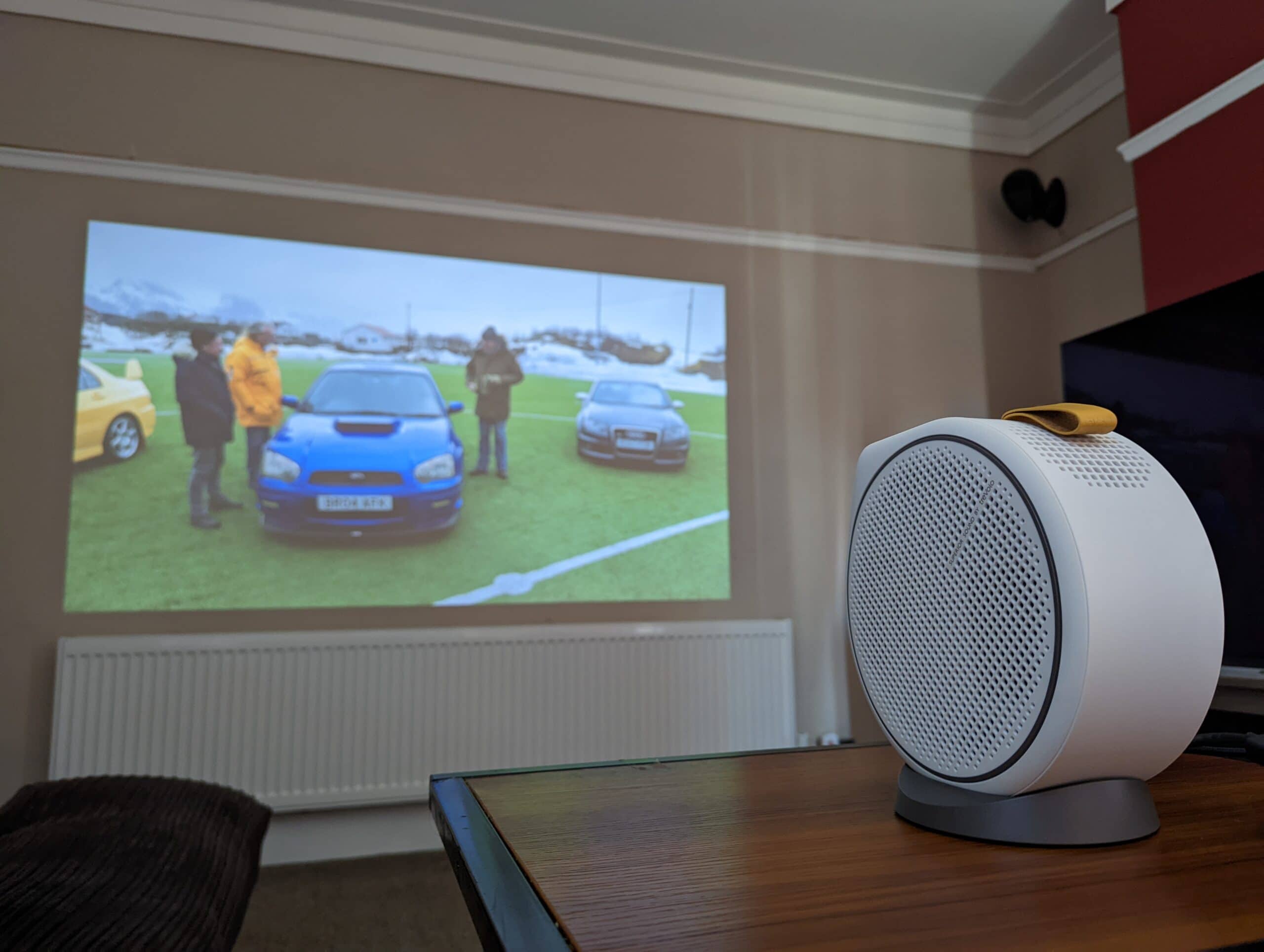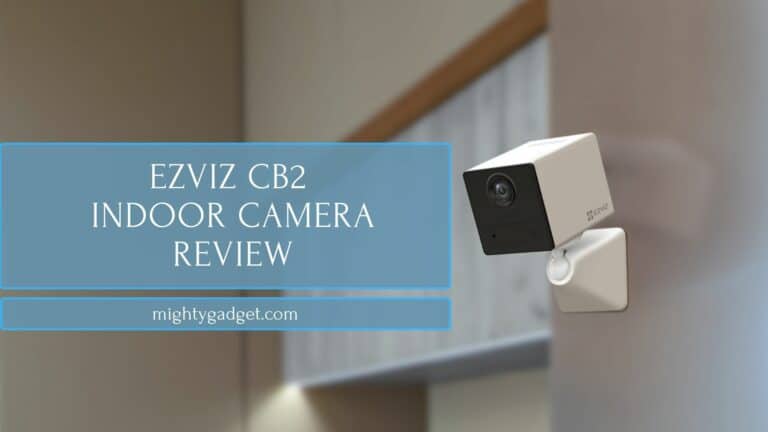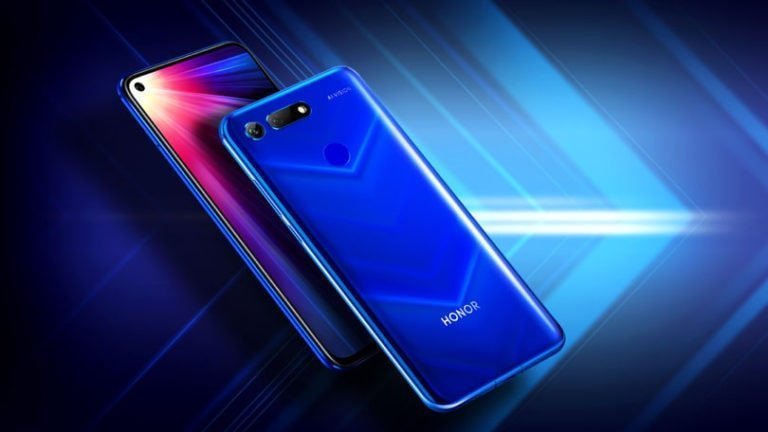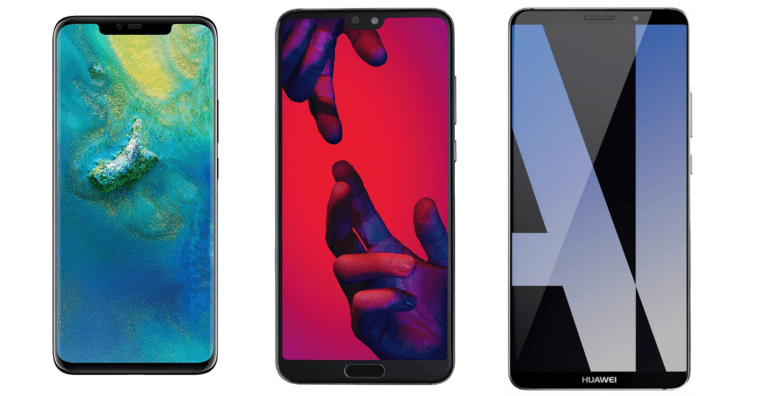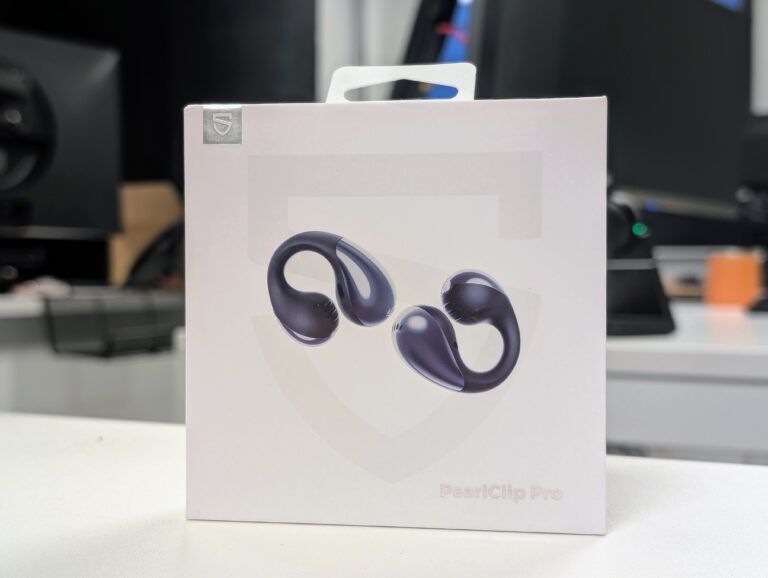Any links to online stores should be assumed to be affiliates. The company or PR agency provides all or most review samples. They have no control over my content, and I provide my honest opinion.
Following on from my initial specification and features comparison between the BenQ GV30 vs Viewsonic M1+ vs Nebula Capsule Max. This part of the review is about the actual performance of the three portable projectors.
Design and Set Up
The three projectors have very different designs, and all three have their pros and cons.
The Nebula Capsule Max is the most simple with its tubular shape. You plonk it on your table, switch it on, and that’s it. The auto focus and keystone correction mean this has been the easiest project for me to use. However, it is reliant on you having the surface at the right height for where you want to project. If you want some sort of adjustment, then you are going to have to invest in a tripod.
The Viewsonic M1+ seems like it should be the best for vertical adjustments. It has a stand built into it, which also acts as a lens cover. This then allows unlimited vertical adjustments. However, I found it the most annoying. The stand is quite lightweight, leaving the projector top-heavy, making it very easy to knock out of place. If you then have it plugged into power and perhaps a FireTV stick attached, you have cables pulling it to the left.
The BenQ GV30 is the best, but not without flaws. For a start, it is bigger and heavier than the other two, so not quite as portable. The circular design also means you need to remember to bring the disk it sits on with you (and not lose it on your travels). It is only a minor gripe, but I lose bits of consumer tech on a daily basis. I am the sort of person that would pack the projector away and forget the stand, and it would eventually be lost in the ether.
The positive part of the BenQ GV30, is that the circular design on top of the disk stand gives you unlimited adjustments. The circular disk and chunky projector also mean that it stays in place and can handle the occasional knock
Focus and Keystone Correction
All three have automatic keystone correction. I found that the Nebula was the best, but they all performed well.
Both the Nebula and BenQ will do autofocus. Again, Nebular was best, but both are good.
The Viewsonic M1+ has manual focus, and I found it quite annoying. It is quite easy to go a little bit past the sweet spot for focus, but then dialling it back slightly to where it should have been doesn’t focus it in. I would regularly have to turn the focus dial almost fully and have to redo the process. I also had to do this every single time I set up the projector. It is only a few seconds, but it does become annoying when you are used to the autofocus from the other options.
Brightness and Image Quality During the Day



These projectors are never going to perform amazingly during the day, but during the summer months, it can be hard to avoid daylight.
My testing was done early afternoon. The blinds are closed in my living room, but they don’t sit fully flush with the window frames due to the bay design and therefore let in more light than I would like.
I used the Fire TV Stick 4K Max for testing as it made it easier and also ensured I got the best resolution possible.
All the projectors were able to produce a good-enough-to-watch image. Significantly better than the full-sized affordable projectors I have used.
The official brightness is supposed to be 300 ANSI lm for both the BenQ and Viewsonic and 200 ANSI lm for the Nebula Max. The Viewsonic M1+ has the lowest resolution of just 854×480, whereas the others can do 1280×720 pixels.
I would say the order of performance is as you might expect:
- BenQ GV30
- Nebula Capsule Max
- Viewsonic M1+
Subjectively, I would say that the BenQ GV30 seems brighter than both the Nebula and Viewsonic and the overall picture quality is better.
The Viewsonic and Nebula both suffered a little more from the image being washed out with ambient light. Because the overall perceived picture quality was reduced, due to the brightness, I can’t say I could tell that much difference between the 480p of the Viewsonic and the 720p of the other two projectors.
Brightness and Image Quality During at Night
I’m rarely awake late enough for it to be properly dark outside, so my testing was done at 5am.
All three projectors perform well in this scenario, and I would happily use any of them for movie nights.
I could tell that the resolution wasn’t as good on the Viewsonic, but it does seem to have a good contrast ratio and managed to achieve deep blacks



Sound Quality
Judging the sound quality is easy between these three projectors, performance is exactly how you would expect it.
The BenQ GV30 is by far the best, thanks to its 2.1 speakers with two 4W tweeters and an 8W woofer.
The Nebula only has a single speaker, and you can tell. However, with it being one powerful speaker, it can produce relatively decent bass, something that’s important if you are watching movies.
To be fair to the Viewsonic M1+, it is quite loud, and the sound quality isn’t awful. I could probably watch a full movie with it, but I think it would greatly benefit from pairing up with a Bluetooth speaker.
On top of the sound quality, you have fan noise. All three are audible. The Viewsonic claims to be the quietest, while the Nebula is the loudest. Subjectively, the fan noise seems about the same on all three; it is quite annoying but easily drowned out with audio. With the BenQ having the best speakers, it seems a bit better equipped to do this.
Overall Opinion
BenQ Links
Just like my summary from yesterday. The BenQ GV30 is certainly the best projector of the three, but it is also by far the most expensive. You get what you pay for.
For me, if I were parting with my own money and could only choose one of these three, it would be the BenQ GV30. I think the overall performance is worth the extra money.
I might have chosen the Nebula Capsule Max, especially when factoring in the discounted price, but I really hate the fact you can’t charge it via USB-C.
I am James, a UK-based tech enthusiast and the Editor and Owner of Mighty Gadget, which I’ve proudly run since 2007. Passionate about all things technology, my expertise spans from computers and networking to mobile, wearables, and smart home devices.
As a fitness fanatic who loves running and cycling, I also have a keen interest in fitness-related technology, and I take every opportunity to cover this niche on my blog. My diverse interests allow me to bring a unique perspective to tech blogging, merging lifestyle, fitness, and the latest tech trends.
In my academic pursuits, I earned a BSc in Information Systems Design from UCLAN, before advancing my learning with a Master’s Degree in Computing. This advanced study also included Cisco CCNA accreditation, further demonstrating my commitment to understanding and staying ahead of the technology curve.
I’m proud to share that Vuelio has consistently ranked Mighty Gadget as one of the top technology blogs in the UK. With my dedication to technology and drive to share my insights, I aim to continue providing my readers with engaging and informative content.
Last update on 2025-07-09 / Affiliate links / Images from Amazon Product Advertising API

